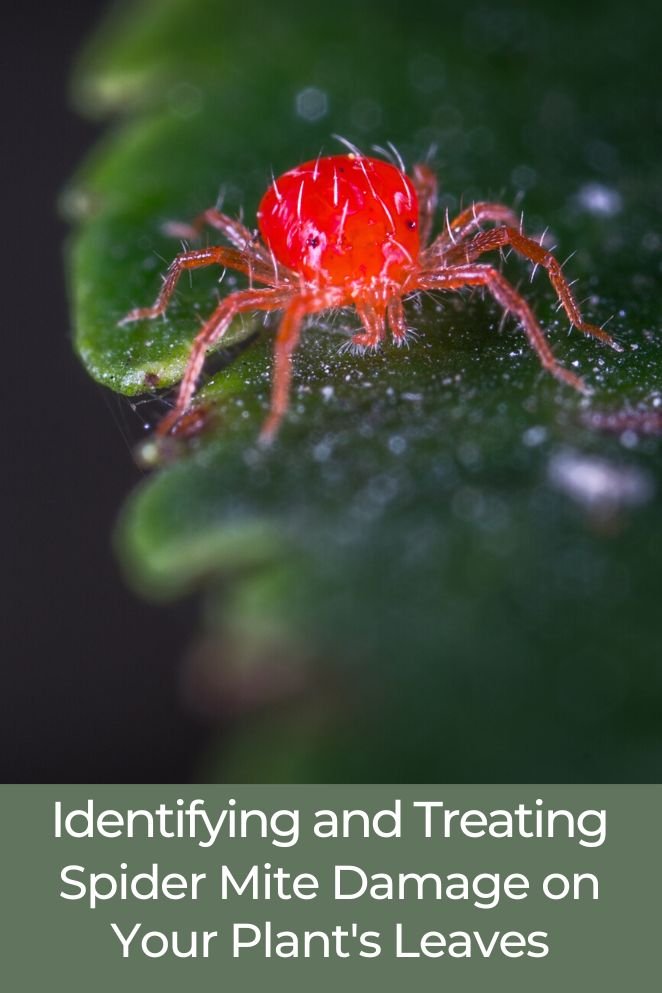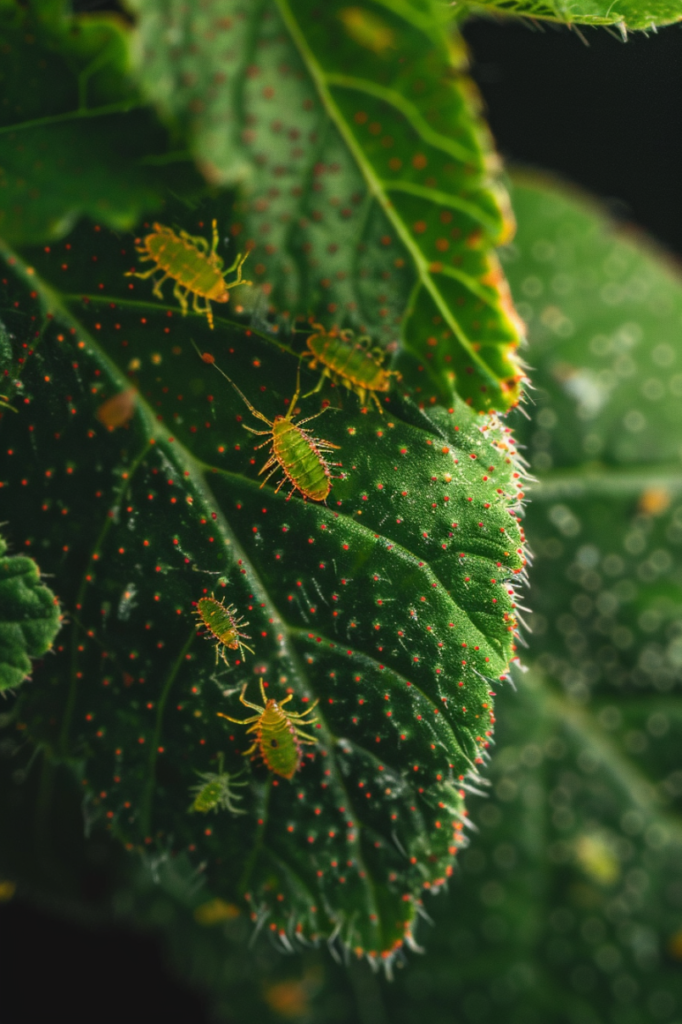
If you’ve noticed tiny webs and specks on your precious greenery, chances are you’re dealing with a common nuisance: spider mites.
These minuscule arachnids might be small, but they can wreak havoc on your plants if left unchecked.
In this guide, we’ll delve into what spider mites are, the damage they can cause, and most importantly, how to kick them to the curb and keep your plants thriving.
What are Spider Mites
Spider mites are tiny, eight-legged creatures that are related to spiders and ticks, but are not actually insects.
They are members of the Tetranychidae family, which includes over 1,200 species.
Spider mites are common pests of both indoor and outdoor plants, and can cause significant damage if left unchecked.
A single female mite can lay hundreds of eggs in her lifetime, and with favorable conditions, those eggs hatch into hungry larvae ready to munch on your plants.
Spider mites are active year-round in many regions. In warmer climates, they can continue breeding and infesting plants even during the winter months, posing a persistent threat to your greenery.
- Read also: Whitefly Resistant Plants: Your Solution to Garden Pests
- Read also: Whitefly Damage Symptoms

What do spider mites look like
Spider mites are very small, typically less than 1/20 of an inch long.
They are difficult to see with the naked eye, but you may be able to spot them as tiny moving dots on the undersides of leaves.
They can be various colors, including red, green, yellow, orange, or even brown.
Some species of spider mites also produce fine webbing, which can be a telltale sign of an infestation.
Identifying Spider Mite Species
Spider mites come in various species, some of the most common and widespread ones include:
Two-spotted spider mite (Tetranychus urticae)
This species is among the most common and notorious offenders when it comes to attacking plants.
As the name suggests, they typically have two dark spots on their bodies, although their coloration can vary from pale green to reddish-brown.
Two-spotted spider mites are known for their rapid reproduction rates and ability to infest a wide range of plants, making them a significant threat to gardens and crops alike.
Red spider mite (Tetranychus cinnabarinus)
Another prevalent species, the red spider mite or carmine spider mite, is named for its distinctive red coloration, particularly in its nymph and adult stages.
These mites are particularly fond of warm, dry conditions, making them common pests in greenhouse environments.
Like their two-spotted counterparts, red spider mites can cause extensive damage to plants by feeding on their sap and leaving behind a trail of destruction.
Other species
In addition to the two-spotted and red spider mites, there are numerous other species within the Tetranychidae family that can cause problems for plants.
While they may vary in color and behavior, their modus operandi remains consistent – feeding on plant sap and causing damage to leaves, stems, and buds.

What Damage Do Spider Mites Cause
Spider mites, these eight-legged creatures, feed on plant sap, leaving behind a trail of destruction. Let’s delve into the different types of damage they inflict:
Stippling and discoloration
Look for tiny yellow or white dots on the upper surface of leaves.
As spider mites pierce plant cells to suck sap, chlorophyll production is disrupted, causing these characteristic dots.
With increasing infestation, stippling merges, leading to discoloration. Leaves may turn bronze, yellow, or reddish.
Leaf drop
Witness leaves prematurely falling from the plant. Severely damaged leaves, unable to photosynthesize efficiently, become weak and eventually drop.
Reduced leaf surface area hinders the plant’s ability to produce food, affecting its overall health and growth.
Stunted growth
Observe the plant growing slower or appearing smaller than expected.
Continuous sap loss weakens the plant, hindering its ability to allocate resources towards growth and development.
Reduced yield in fruit-bearing plants, stunted ornamental growth, and overall decline in plant vigor.
Webbing
Notice fine, silken webs covering leaves, branches, and even fruits.
Some spider mite species, like the two-spotted spider mite, produce webbing as they move and feed.
Webbing can trap dust and moisture, further hindering photosynthesis and creating favorable conditions for fungal diseases.
Reduced fruit quality
Observe misshapen, discolored, or blemished fruits on infested plants.
Spider mite feeding can directly damage fruits, affecting their appearance, marketability, and even taste.
Economic losses for farmers and reduced enjoyment for home gardeners who grow fruits.

How to Control Spider Mites
There are several effective strategies you can employ to regain control and protect your verdant companions.
Here’s a multi-pronged approach you can take:
Cultural control
- Increase humidity: Spider mites thrive in dry conditions. Use a humidifier, group plants together, or mist them regularly to raise humidity levels around your plants.
- Water thoroughly: Regularly water your plants, ensuring they receive proper hydration. Stressed plants are more susceptible to spider mite infestations.
- Quarantine new plants: Before bringing new plants into your home, inspect them thoroughly for any signs of spider mites. Isolate them for a few weeks to monitor closely.
- Prune heavily infested parts: Remove and destroy heavily infested leaves or branches to prevent further spread and reduce the mite population.
Natural control
- Insecticidal soap or neem oil: These readily available options are effective against spider mites and relatively safe for plants and beneficial insects. Mix according to label instructions and spray thoroughly, targeting undersides of leaves.
- Release predatory mites: Ladybugs, predatory mites, and lacewings are natural enemies of spider mites. Introducing them to your infested plants can provide long-term biological control.
- Garlic spray: Prepare a garlic spray by steeping crushed garlic cloves in water. This homemade repellent can deter spider mites and other pests.
Chemical control
- Insecticidal sprays: As a last resort, consider using insecticidal sprays specifically formulated for spider mites. Always read the label carefully, follow application instructions precisely, and prioritize organic or environmentally friendly options whenever possible.

- Read also: Whitefly vs. Aphid – Know the Difference
- Read also: Stink Bug Plant Damage and How to Protect Your Garden
Conclusion
In the battle against spider mites, vigilance is key.
By familiarizing yourself with these tiny troublemakers and taking proactive measures to control their populations, you can protect your plants and keep them flourishing for years to come.
Remember, a little prevention goes a long way in maintaining a healthy garden ecosystem.
FAQs
While spider mites can cause irritation if they come into contact with human skin, they are generally not considered harmful to humans.
While chemical pesticides can be effective against spider mites, they may also harm beneficial insects and disrupt the natural balance of your garden ecosystem. Whenever possible, opt for safer, more eco-friendly control methods.



